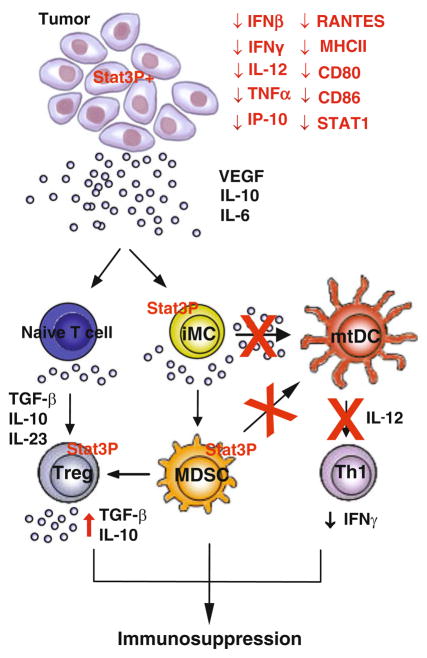Fig. 1.
Multifaceted role of Stat3 in anti-tumor immunity. Stat3 is persistently activated in tumors and the tumor microenvironment, inducing production of many tumor-derived factors such as VEGF, IL-10, and IL-6. Increased Stat3 activity in tumor-associated immune cells promotes immunosuppressive environment, by mediating the generation of immune suppressor cells, including MDSC and T regs. The expression of MDSC and Treg effector molecules, such as TGF-β, IL-10, and IL-23, is in part mediated by Stat3. Activated Stat3 in tumor-associated immune cells also inhibits DC maturation as well as the production of Th1-type cytokines such as IL-12 and IFN-γ. As such, Stat3 activity in tumor impairs both adaptive and innate immune responses against tumor

